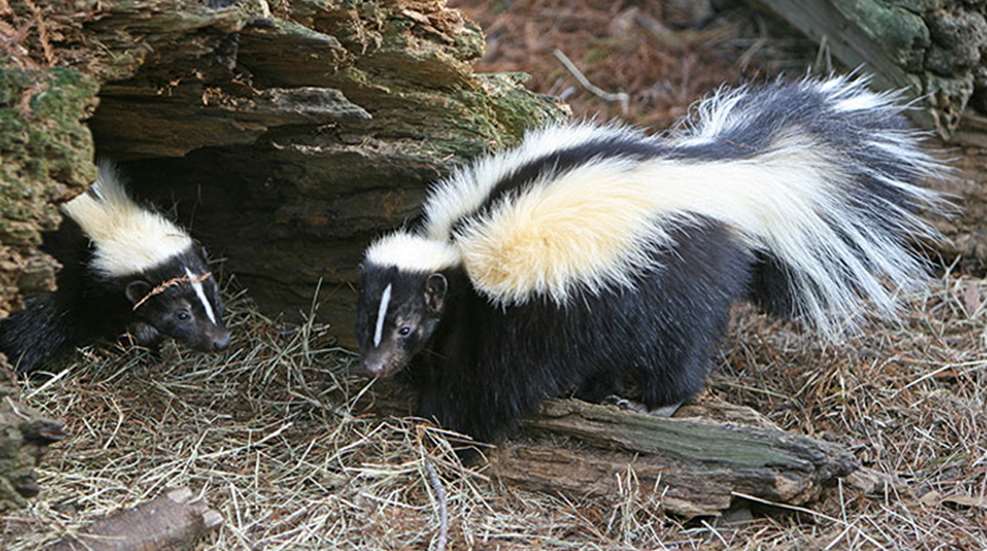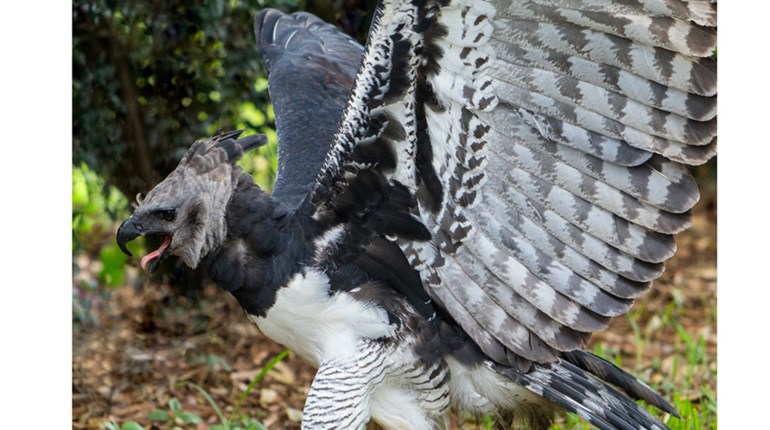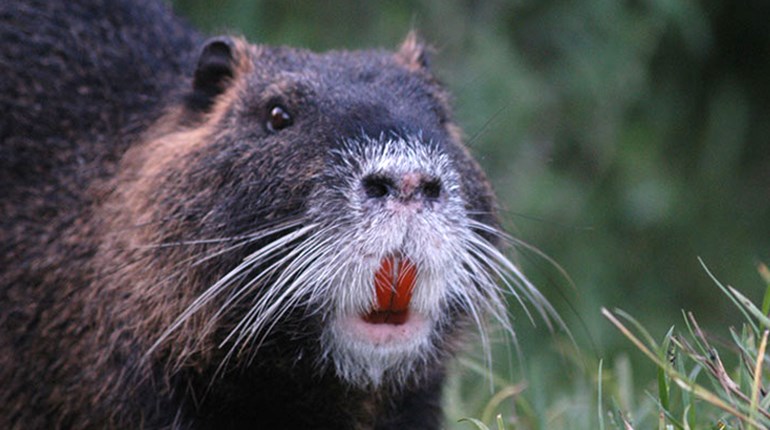
Photo Courtesy of Bird Photos
Has this happened to you? You’re walking along a suburban road as the sun sets when suddenly you spot what appears to be a cat, ambling towards you. As you approach it, however, your heart sinks into your stomach—that’s no cat, it’s a striped skunk! You shudder, give it a very wide berth, and go on about your way. But other than the fact that this is a critter best left alone, what do you know about the humble (and smelly) skunk?
The scientific name for the skunk is Mephitis mephitis. “Mephitis” in Latin refers to a very foul odor. (As you can see, whoever gave the skunk its name felt strongly enough about the way skunks smell to say it twice!) Of course, this refers to the skunk’s pungent, horrible-smelling spray. This spray is one of the keys to the skunk’s spectacular success as a species. Skunks secrete an oily liquid from glands under their tails, and they’re capable of launching it up to 10 feet. Although the spray is basically harmless, it is incredibly rank and difficult to remove.
You may have noticed that many animals in the wild use camouflage—either to hide themselves from predators, or to conceal themselves from prey. Skunks don’t; they sport loud black-and-white coats that stand out against most backgrounds and in most lights. Nor is the skunk a fast runner, with top speeds at only around 10 mph. This is because most predators seem to instinctively understand just how obnoxious a close encounter with a skunk can be! The skunk’s only real predator is the horned owl, which like most birds has a very poor sense of smell.
Skunks also have the advantage of being omnivorous, consuming everything from insects, to eggs, to small animals like frogs…and they’re not above rooting in garbage, either. Skunks also like to raid beehives. They’ll scratch at the front of the hive and then eat the bees as they emerge, relying on their thick fur to shield them from stings. This means that these animals do well in a wide variety of climates, with a range that extends from northern Canada all the way to northern Mexico.
FAST FACTS:
• Skunks may be legally trapped for their fur in a number of areas (be sure to check your local laws). Skunk fur is usually dyed black before it’s used in clothing.
• There are 13 subspecies of striped skunk.
• Skunks are crepuscular—meaning they are most active at dawn and dusk.






































